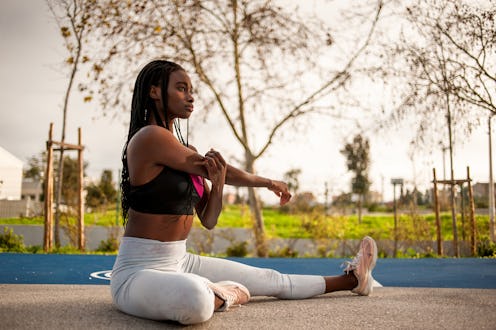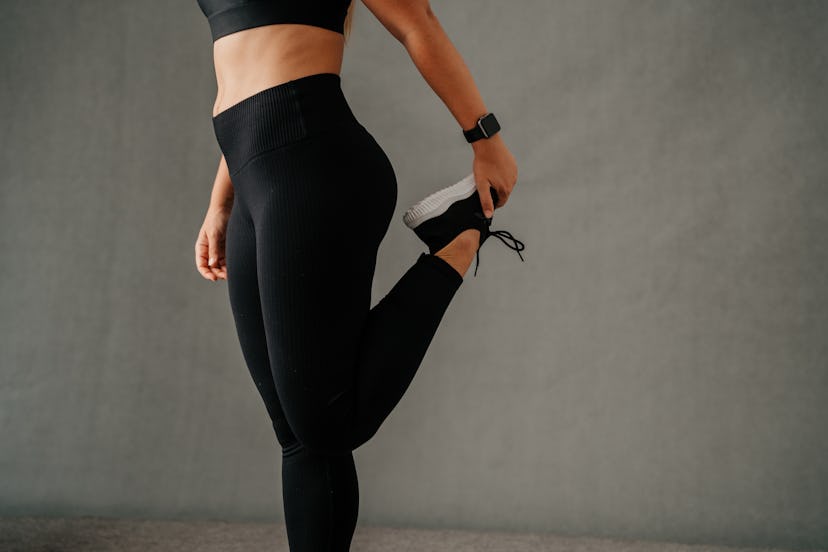Fitness
Experts break it down.
Stretchingis always a good idea.
During a stretch, theres anincrease in blood flow and circulationto the area, Perkins says.

Here, experts reveal how long you should hold a stretch, depending on what youre prepping for.
Astatic stretchis the kind you hold without moving, saysDr.
Jacob Hascalovici, M.D., Ph.D., the chief medical officer atClearing.

Think of astanding hamstring stretch, anupper back stretch, or a quad stretch.
Thats becauselong stretches affect your muscle fibers, reactivity, and nerve-to-muscle connections.
(Thats also why static stretches are recommended post-activity.)

Feel free to do a static stretch after a workout or whenever youre feeling stiff.
You may also observe amental benefitfrom giving yourself time to reset.
as a way to prime your body for activity or to just get the blood flowing.
These moving stretches also feel really good after prolonged sitting.
The most important thing is not to stretch to the point of pain, Perkins says.
If you feel burning, tingling, or any other unpleasant sensations, thats your cue to ease up.
You should also double-check to stretch both sides of the body equally, Perkins says.
Thatll ensure your muscles stay balanced, so you get the fullbenefit of your stretch routine.
For general limberness, you should aim to stretch on the regular.
Moderation mixed with consistency is the key to a proper stretching routine.
But dont feel like you have to go to your end range, she says.
Studies referenced:
Chaabene, H. (2018).
The acute effects of different durations of static stretching on dynamic balance performance.
J Strength Cond Res.
Iwata, M. (2019).
The Effect of Static Stretching Duration on Muscle Blood Volume and Oxygenation.
J Strength Cond Res.
Nakamura, M. (2011).
Page, P. (2012).
Current concepts in muscle stretching for exercise and rehabilitation.
Int J Sports Phys Ther.
PMID: 22319684; PMCID: PMC3273886.